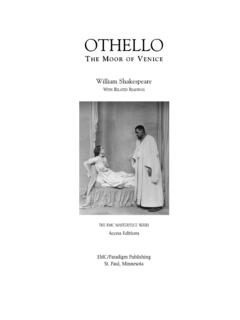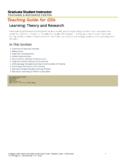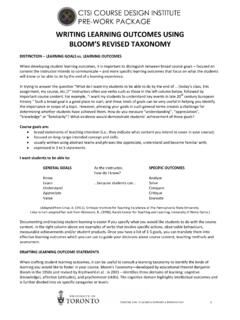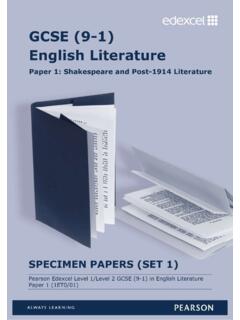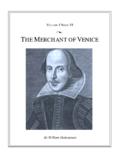Transcription of GCSE (9-1) English Literature
1 GCSE (9-1) English LiteratureSample Assessment Materials Pearson Edexcel Level 1/Level 2 GCSE (9 - 1) in English Literature (1ET0)First teaching from September 2015 First certifi cation from June 2017 Issue 1 PearsonEdexcel Level 1/Level 2 GCSE (9 1) in English Literature (1ET0) Sample Assessment Materials First certification 2017 Edexcel, BTEC and LCCI qualifications Edexcel, BTEC and LCCI qualifications are awarded by Pearson, the UK s largest awarding body offering academic and vocational qualifications that are globally recognised and benchmarked. For further information, please visit our qualification websites at , or Alternatively, you can get in touch with us using the details on our contact us page at About Pearson Pearson is the world's leading learning company, with 40,000 employees in more than 70 countries working to help people of all ages to make measurable progress in their lives through learning.
2 We put the learner at the centre of everything we do, because wherever learning flourishes, so do people. Find out more about how we can help you and your learners at: References to third party material made in these sample assessment materials are made in good faith. Pearson does not endorse, approve or accept responsibility for the content of materials, which may be subject to change, or any opinions expressed therein. (Material may include textbooks, journals, magazines and other publications and websites.) All information in this document is correct at the time of origami artwork: Mark Bolitho Origami photography: Pearson Education Ltd / Naki Kouyioumtzis ISBN 978 1 446 91438 0 All the material in this publication is copyright Pearson Education Limited 2014 Contents1 Introduction 12 General marking guidance 33 Paper 1 54 Paper 1 Mark Scheme 415 Paper 2 1156 Paper 2 Mark Scheme 157 Pearson Edexcel Level 1/Level 2 GCSE (9 1) in English Literature Sample Assessment Materials Issue 1 October 2014 Pearson Education Limited 20141 Introduction The Pearson Edexcel Level 1/Level 2 GCSE (9 1) in English Literature is designed for use in schools and colleges.
3 It is part of a suite of GCSE qualifications offered by Pearson. These sample assessment materials have been developed to support this qualification and will be used as the benchmark to develop the assessment students will take. Pearson Edexcel Level 1/Level 2 GCSE (9 1) in English Literature Sample Assessment Materials Issue 1 October 2014 Pearson Education Limited 20142 General marking guidance All candidates must receive the same treatment. Examiners must mark the last candidate in exactly the same way as they mark the first. Mark schemes should be applied positively. Candidates must be rewarded for what they have shown they can do rather than be penalised for omissions. Examiners should mark according to the mark scheme not according to their perception of where the grade boundaries may lie. All the marks on the mark scheme are designed to be awarded. Examiners should always award full marks if deserved, if the answer matches the mark scheme.
4 Examiners should also be prepared to award zero marks if the candidate s response is not worthy of credit according to the mark scheme. Where some judgement is required, mark schemes will provide the principles by which marks will be awarded and exemplification/indicative content will not be exhaustive. When examiners are in doubt regarding the application of the mark scheme to a candidate s response, a senior examiner must be consulted before a mark is given. Crossed-out work should be marked unless the candidate has replaced it with an alternative response. Candidates responses need to provide evidence that meets the whole of the level, and preceding levels in a levels based mark scheme, before being considered against a higher level. Marking guidance- specific The marking grids have been designed to assess student work holistically. The grids identify which Assessment Objective is being targeted by each bullet point within the level descriptors.
5 When deciding how to reward an answer, examiners should consult both the indicative content and the associated marking grid(s). When using a levels-based mark scheme, the best fit approach should be used. Examiners should first decide which descriptor most closely matches the answer and place it in that level. The mark awarded within the level will be decided based on the quality of the answer and will be modified according to how securely all bullet points are displayed at that level. In cases of uneven performance, the points above will still apply. Candidates will be placed in the level that best describes their answer according to each of the Assessment Objectives described in the level. Marks will be awarded towards the top or bottom of that level depending on how they have evidenced each of the descriptor bullet points. Examiners of GCSE English Literature should be mindful of the weighting of assessment objectives within the mark grid.
6 The proportion of marks is represented in the indicative content and the levels based mark scheme. Examiners must consider this when making their judgements. The mark grid heading identifies which Assessment Objective is being targeted by each bullet point within the level descriptors. Pearson Edexcel Level 1/Level 2 GCSE (9 1) in English Literature Sample Assessment Materials Issue 1 October 2014 Pearson Education Limited 20143 General marking guidance All candidates must receive the same treatment. Examiners must mark the last candidate in exactly the same way as they mark the first. Mark schemes should be applied positively. Candidates must be rewarded for what they have shown they can do rather than be penalised for omissions. Examiners should mark according to the mark scheme not according to their perception of where the grade boundaries may lie. All the marks on the mark scheme are designed to be awarded.
7 Examiners should always award full marks if deserved, if the answer matches the mark scheme. Examiners should also be prepared to award zero marks if the candidate s response is not worthy of credit according to the mark scheme. Where some judgement is required, mark schemes will provide the principles by which marks will be awarded and exemplification/indicative content will not be exhaustive. When examiners are in doubt regarding the application of the mark scheme to a candidate s response, a senior examiner must be consulted before a mark is given. Crossed-out work should be marked unless the candidate has replaced it with an alternative response. Candidates responses need to provide evidence that meets the whole of the level, and preceding levels in a levels based mark scheme, before being considered against a higher level. Marking guidance- specific The marking grids have been designed to assess student work holistically.
8 The grids identify which Assessment Objective is being targeted by each bullet point within the level descriptors. When deciding how to reward an answer, examiners should consult both the indicative content and the associated marking grid(s). When using a levels-based mark scheme, the best fit approach should be used. Examiners should first decide which descriptor most closely matches the answer and place it in that level. The mark awarded within the level will be decided based on the quality of the answer and will be modified according to how securely all bullet points are displayed at that level. In cases of uneven performance, the points above will still apply. Candidates will be placed in the level that best describes their answer according to each of the Assessment Objectives described in the level. Marks will be awarded towards the top or bottom of that level depending on how they have evidenced each of the descriptor bullet points.
9 Examiners of GCSE English Literature should be mindful of the weighting of assessment objectives within the mark grid. The proportion of marks is represented in the indicative content and the levels based mark scheme. Examiners must consider this when making their judgements. The mark grid heading identifies which Assessment Objective is being targeted by each bullet point within the level descriptors. Pearson Edexcel Level 1/Level 2 GCSE (9 1) in English Literature Sample Assessment Materials Issue 1 October 2014 Pearson Education Limited 20144 Indicative content is exactly that it includes factual points that candidates are likely to use to construct their answer. It is possible for an answer to be constructed without mentioning some or all of these points, as long as they provide alternative responses to the indicative content that fulfil the requirements of the question.
10 It is the examiner s responsibility to apply their professional judgement to the candidate s response in determining if the answer fulfils the requirements of the question. For AO3, context is information which informs the understanding of a text. Candidate responses should treat it in ways that are suitable to the text, the author and the sp ecific task. It is important that the contextual information provided is directly relevant, rather than being bolt-on , (general) context that does not illuminate the response to the particular question. Responses to particular questions should select fro m relevant context to illustrate and develop their interpretation of what is required by the task. The examples in the indicative content section show the link between text, task and context. Points that make these links should be rewarded; general statements which do not support the interpretation should not.











